Table of Contents
- Understanding the Fundamentals of Dog Training
- Positive Reinforcement: The Key to Successful Training
- Essential Equipment and Tools for Dog Training
- Basic Commands Every Dog Should Know
- House Training Your Puppy: A Comprehensive Guide
- Leash Training and Walking Etiquette
- Socialization Strategies for a Well-Adjusted Dog
- Advanced Dog Training Methods and Commands
- Addressing Common Behavioral Issues
- Creating a Consistent Training Schedule
- Conclusion
- FAQ
“Training a dog is not about control, but about communication,” says renowned dog behaviorist Cesar Millan. This powerful insight captures the essence of effective dog training. It’s a journey of understanding, patience, and mutual respect between humans and their canine companions.
Dog training is more than just teaching commands. It’s about creating a deep, meaningful connection with your furry friend. Successful dog obedience training requires dedication, consistent practice, and a strategic approach. It focuses on positive reinforcement and clear communication.
Every dog has unique potential waiting to be unlocked. With the right techniques, you can transform your energetic puppy into a well-behaved, confident companion. They will understand boundaries and thrive on interaction.
Key Takeaways
- Dog training is about building trust and communication
- Consistent practice yields the best results
- Positive reinforcement works better than punishment
- Each dog learns differently and requires personalized approach
- Training strengthens the human-dog bond
Understanding the Fundamentals of Dog Training
Dog training is a journey of communication and understanding between humans and dogs. It starts with knowing how dogs learn and interact with their world.

The Science Behind Canine Learning
Dogs learn by watching, repeating, and getting rewards. They learn from their instincts and what triggers them. Important parts of their learning include:
- Associative memory development
- Reward-based motivation
- Pattern recognition
- Social learning from pack dynamics
“Training is not about forcing your dog to do something, but creating an environment where they want to learn.” – Professional Dog Trainer
Building a Strong Human-Dog Bond
The base of good training is a strong bond. Consistent communication and trust are key. Dogs feel secure and learn best when they know their place in the family.
Setting Realistic Training Goals
Changing dog behavior takes patience and a plan. Setting achievable goals keeps owners motivated and avoids frustration. Here are some tips:
- Start with basic commands
- Practice short, frequent training sessions
- Celebrate small achievements
- Adapt techniques to your dog’s individual personality
Every dog is different, and knowing their personality is crucial for training success.
Positive Reinforcement: The Key to Successful Training
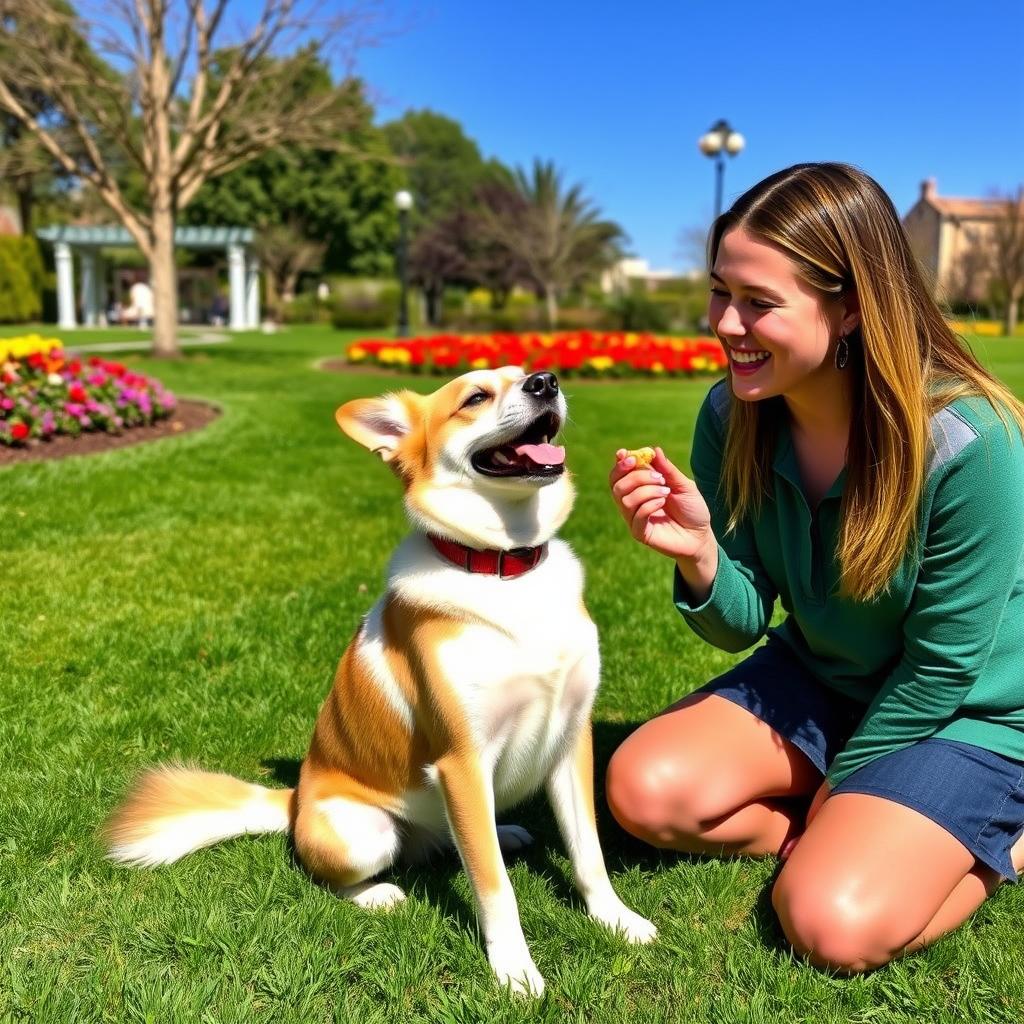
Positive reinforcement dog training is a new way to teach dogs good habits. It’s different from old methods that punish bad behavior. Instead, it rewards good actions, making learning fun and supportive for your dog.
“The best way to train a dog is to make training feel like a fun game, not a chore.” – Professional Dog Trainer
Clicker training for dogs is a key part of positive reinforcement. It uses a small device that makes a click sound when your dog does something right. Then, they get a treat or praise right away.
- Builds strong trust between dog and owner
- Creates positive emotional associations with learning
- Increases motivation and engagement
- Reduces stress and anxiety during training
The main idea of positive reinforcement is simple: reward the behavior you want to see repeated. When a dog gets something nice after doing something good, they’re more likely to do it again.
Here are some tips for using positive reinforcement:
- Use treats that really excite your dog
- Give rewards right after the action
- Always be clear about what you expect
- Slowly give fewer treats as the behavior becomes a habit
Clicker training is a precise way to talk to your dog. The clear click sound tells them exactly what they did right. This makes learning quick and fun.
Essential Equipment and Tools for Dog Training
Training a dog needs more than patience and skill. The right tools can greatly help in teaching your dog. Choosing the right tools is key for a positive learning environment.
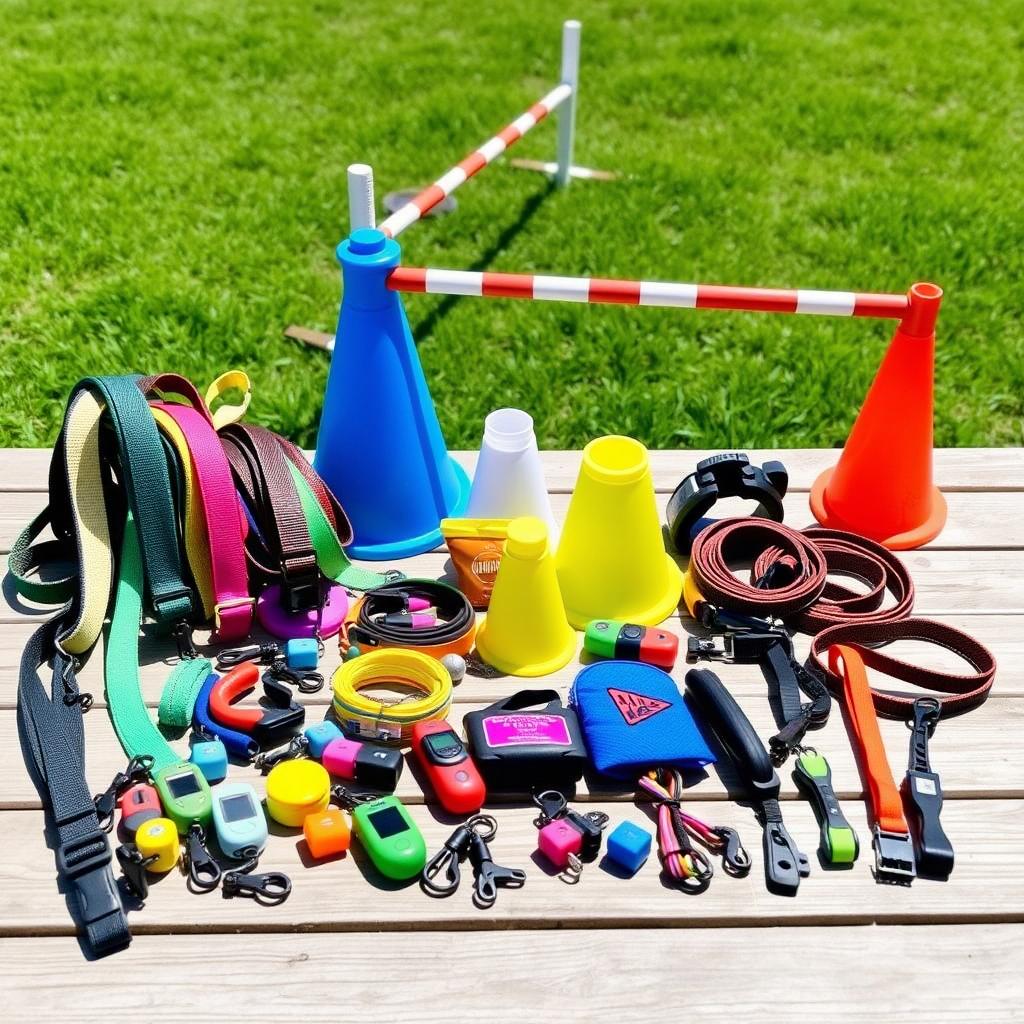
Dog training is not just about how you teach. It’s also about having the right equipment. Professional trainers say quality tools can change the training experience.
Choosing the Right Training Treats
Training treats are very important in dog training. The best treat should be:
- Small and easy to eat quickly
- High in taste
- Low in calories
- Nutritionally balanced
Selecting Appropriate Training Gear
Crate training needs specific equipment for success. Different tools have different uses in dog training.
| Training Tool | Purpose | Recommended For |
|---|---|---|
| Adjustable Harness | Control and safety during walks | Puppies and active dogs |
| Clicker | Precision marker for desired behaviors | Positive reinforcement training |
| Training Crate | Safe space and behavioral management | Puppies and dogs learning boundaries |
Training Aids and Their Uses
Modern dog training uses many tools to help learning. Puzzle toys and interactive feeders make training fun and mentally challenging for dogs.
“The right tool can turn training from a chore into an enjoyable bonding experience.” – Professional Dog Trainer
Every dog is different, so what works for one might not work for another. Trying different tools can help find the best way to train your dog.
Basic Commands Every Dog Should Know
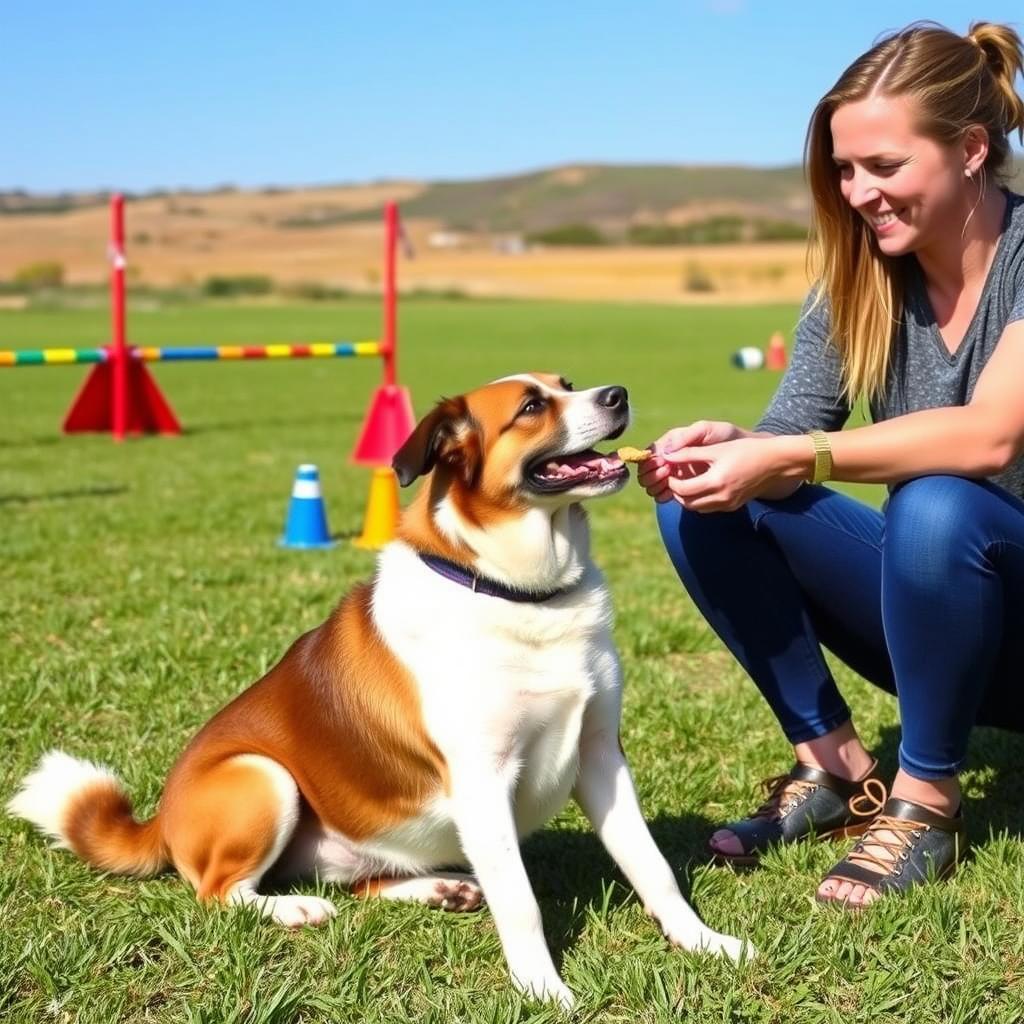
Dog obedience training is key for a good relationship with your pet. Learning basic commands is the first step in effective training. It helps you and your dog get along well for years.
Knowing essential commands is vital for clear communication and your dog’s safety. Here are the top commands every dog needs to learn:
- Sit: A basic command that helps control your dog in many situations
- Stay: Important for keeping your dog safe from dangers
- Come: A crucial recall command that could save your dog’s life
- Down: Helps manage your dog’s energy and promotes calmness
- Leave it: Stops your dog from picking up harmful objects
When training your puppy, be consistent. Short, regular training sessions are best. Give treats and praise right away to encourage good behavior.
“Training your dog is not about domination, but about communication and mutual respect.” – Professional Dog Trainer
Begin training in a quiet place with few distractions. As your dog gets better, add more distractions and practice in different spots. Remember, every dog learns at their own speed, so be patient.
Make practicing these commands a daily routine. Keep it fun and engaging. Your consistency will help your puppy develop great behavior and strengthen your bond.
House Training Your Puppy: A Comprehensive Guide
House training a dog needs patience, consistency, and a smart plan. Puppy training tips are key for new owners to teach good bathroom habits early. Young puppies can’t control their bladders well, so a clear training plan is vital for both the puppy and the owner.
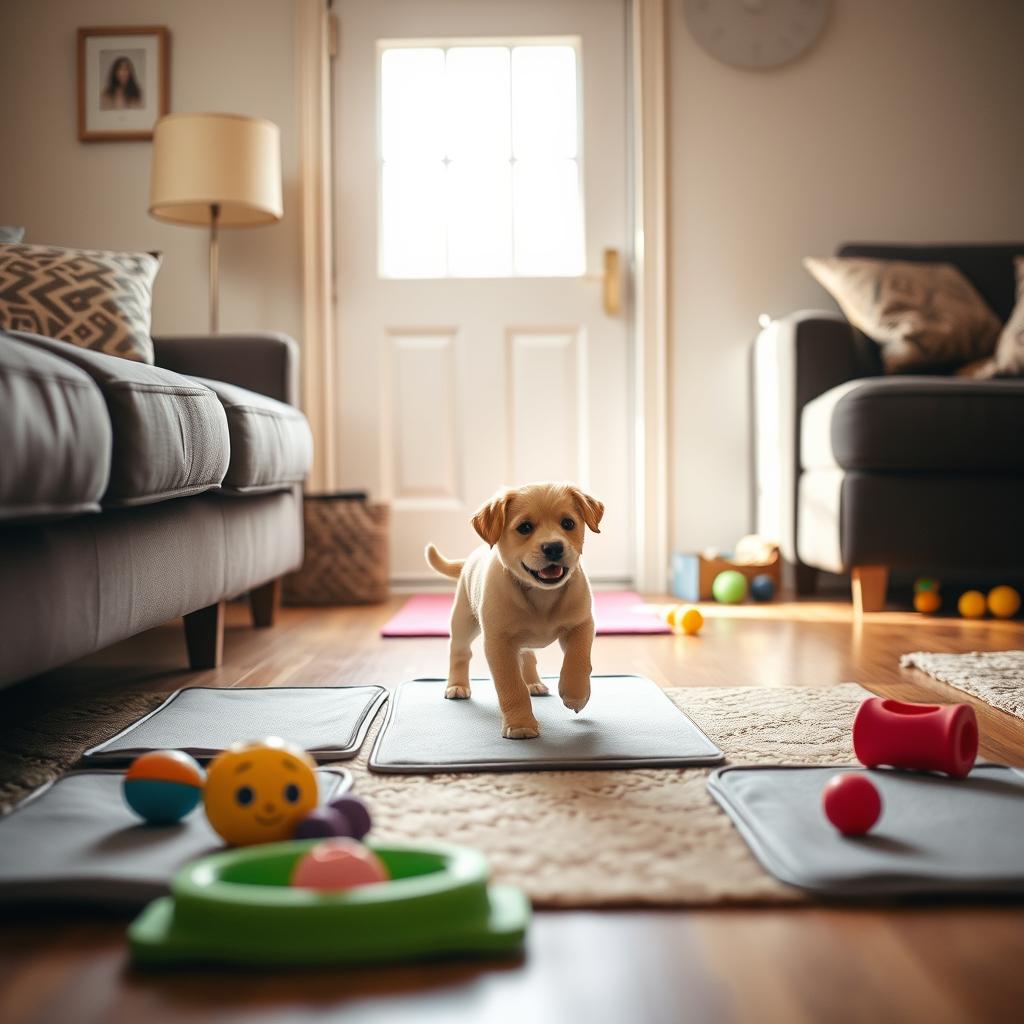
First, understand your puppy’s natural bathroom needs. Puppies usually need to go:
- Right after waking up
- After eating or drinking
- After playing
- Before bedtime
Creating an Effective Potty Schedule
A regular schedule helps puppies learn fast. They often need to go every 1-2 hours during the day. Here’s a suggested schedule based on age:
| Puppy Age | Bathroom Frequency | Typical Duration |
|---|---|---|
| 8-10 weeks | Every 1 hour | 15-30 minutes |
| 10-12 weeks | Every 2 hours | 30-45 minutes |
| 3-6 months | Every 3-4 hours | 45-60 minutes |
Dealing with Accidents Properly
Accidents happen during house training. Never punish your puppy for accidents. Instead, use positive methods:
- Clean accidents well with enzymatic cleaner
- Stop and guide them to the right spot
- Praise and reward them for going potty outside
“Patience and consistency are the keys to successful puppy house training.” – Professional Dog Trainer
Transitioning to Outdoor Training
Start by introducing outdoor bathroom breaks. Pick a specific spot and use command words. Reward your puppy right away for going potty outside to encourage good behavior.
Leash Training and Walking Etiquette
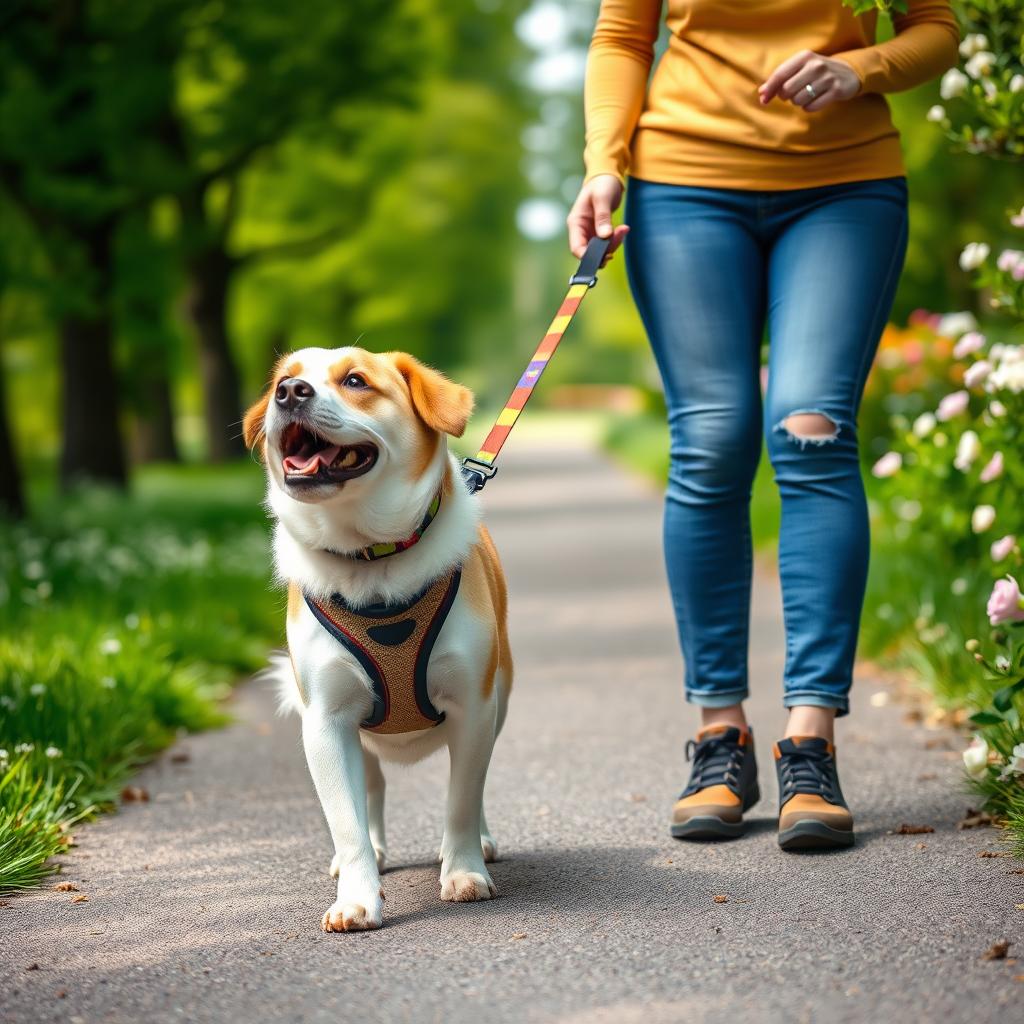
Learning leash training techniques is key for a smooth walk with your dog. It’s about understanding how to talk to and control your dog while walking.
“A well-trained dog on a leash is a joy to walk and a reflection of your training skills.”
Leash training needs patience and regular practice. Dogs love to explore, which can cause them to pull. It’s important to set clear rules and use positive rewards.
- Start training in a quiet, distraction-free environment
- Use high-value treats as motivation
- Practice the “stop and go” method to discourage pulling
- Maintain a relaxed but firm grip on the leash
Dogs may have trouble with leash reactivity, making walks hard. Gradual exposure and positive reinforcement help manage these issues well.
| Training Technique | Purpose | Difficulty Level |
|---|---|---|
| Loose Leash Walking | Teach dog to walk without tension | Moderate |
| Heel Command | Maintain dog’s position beside you | Advanced |
| Distraction Training | Manage dog’s focus during walks | Challenging |
Keep practicing these leash training methods to change your dog’s walking habits. Every dog is different, so adjust your training to fit your dog’s needs and personality.
Socialization Strategies for a Well-Adjusted Dog
Teaching your dog to socialize is key for a happy and well-behaved pet. The first few months of a dog’s life are when they learn the most. Good puppy training tips can lead to positive social experiences that shape their behavior.
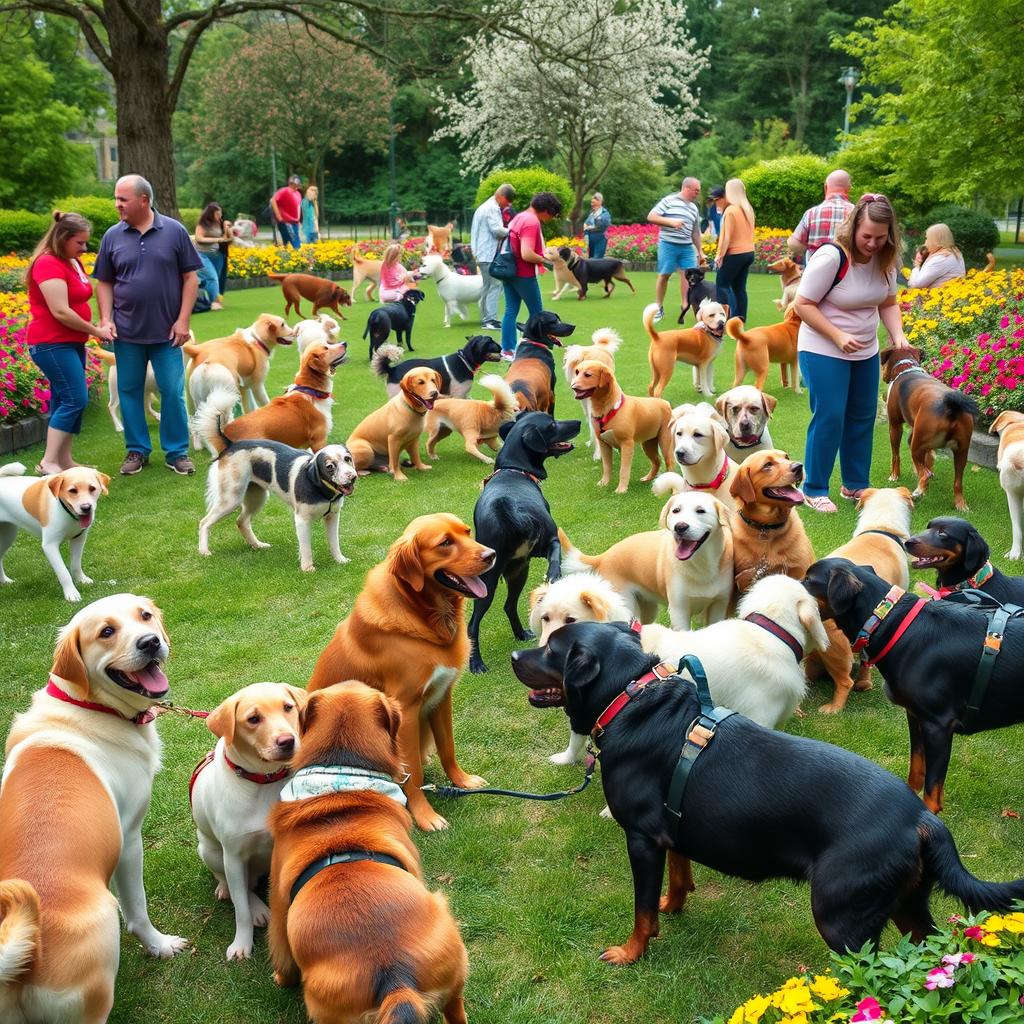
Socialization is more than just meeting new people and animals. It’s about introducing your puppy to different places, people, and pets in a safe and positive way. This helps build their confidence and reduces fear.
Early Socialization Windows
Experts say to start socializing puppies between 3 and 16 weeks old. During this time, they are most open to new things. Important steps include:
- Exposing puppies to different sounds and environments
- Introducing various people and animals
- Creating positive associations with new experiences
Safe Exposure Techniques
When socializing your dog, safety comes first. Begin with short, controlled interactions. Then, slowly add more time and complexity.
| Socialization Area | Recommended Approach |
|---|---|
| People | Gentle introductions with calm individuals |
| Other Dogs | Supervised meetings with vaccinated, friendly dogs |
| Environments | Gradual exposure to different surfaces and sounds |
Managing Social Interactions
Good puppy training tips include watching your dog’s body language. Know when they’re feeling stressed. Be ready to take them out of situations that are too much for them.
“Patience and positive reinforcement are the keys to successful dog socialization.” – Professional Dog Trainer
By using these socialization strategies, you can raise a confident and well-adjusted dog.
Advanced Dog Training Methods and Commands
Advanced dog training needs dedication and special techniques. It goes beyond simple commands like sit and stay. It tests the dog’s mind and the owner’s skills.

Experts suggest using complex commands that build on basic skills. These advanced methods improve your dog’s abilities and your bond with them.
- Distance Commands: Teaching dogs to respond from far away
- Precision Heel: Keeping perfect alignment during walks
- Complex Trick Training: Learning intricate sequences
“Advanced training transforms dogs from simply obedient to truly remarkable companions.” – Professional Dog Trainer
Some key advanced commands are:
- Extended “Place” command
- “Leave It” at long distances
- Directional commands without physical help
- Scent work and tracking
Agility courses and scent detection keep dogs mentally sharp. They also improve obedience skills. These activities challenge dogs and prevent bad behavior.
Getting good at advanced training takes patience and regular practice. Knowing how your dog learns is crucial. Getting help from a pro can make a big difference.
Addressing Common Behavioral Issues
Dog behavior modification needs patience, understanding, and consistent positive reinforcement. Many pet owners face tough behaviors that can harm the bond between humans and dogs. By finding the cause and using smart strategies, you can turn bad behaviors into chances for learning and growing closer.
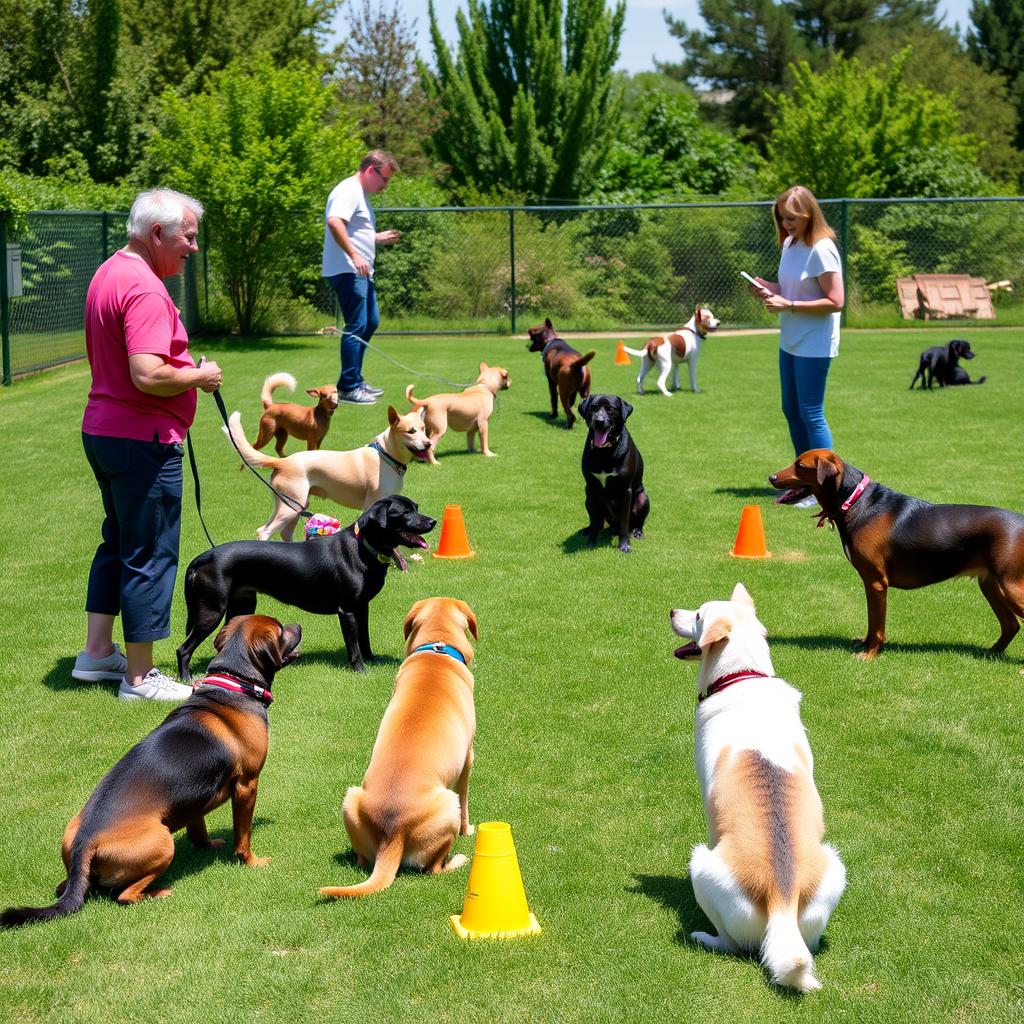
Managing Excessive Barking
Excessive barking comes from many reasons like anxiety, feeling protective, or wanting attention. Good strategies for dog behavior modification include:
- Figuring out what makes them bark
- Teaching them to be quiet
- Using positive reinforcement to focus their attention
- Keeping them mentally and physically active
Dealing with Jumping and Chewing
Jumping and chewing are natural for dogs but need training. Positive reinforcement helps change these behaviors:
- Ignore the jumping to stop rewarding it
- Give them the right chew toys
- Reward them for calm and controlled behavior
- Use clear commands consistently
“The key to successful behavior modification is understanding your dog’s emotional state and providing clear, consistent guidance.” – Professional Dog Trainer
Preventing Food Aggression
Food aggression is serious and needs careful handling. Techniques for dog behavior modification include gradual exposure and building trust through controlled feeding.
- Practice hand-feeding in safe places
- Teach “leave it” and “wait” commands
- Never punish them for being aggressive
- Get professional help if it doesn’t get better
Remember, every dog is unique. Patience and consistency are your most powerful tools in addressing behavioral challenges.
Creating a Consistent Training Schedule
Creating a steady dog training routine is key for good puppy training tips. Dogs love knowing what to expect and following a plan. This makes a well-thought-out training schedule vital for their learning and behavior.
Good dog training needs smart time planning. Short, regular training sessions work better than long, random ones. Try for 5-10 minute sessions several times a day. This keeps your puppy focused and avoids them getting too tired.
“Consistency is the golden rule of dog training. Regular practice transforms learning into habit.”
- Morning Session (15-20 minutes):
- Basic obedience commands
- Potty training reinforcement
- Short walking exercises
- Afternoon Session (10-15 minutes):
- Socialization activities
- Skill reinforcement
- Interactive play training
- Evening Session (15-20 minutes):
- Recall training
- Impulse control exercises
- Relaxation techniques
Make your dog training schedule fit your life for lasting results. Working professionals might focus on morning and evening sessions. Stay-at-home owners can spread training out all day.
Keep track of your puppy’s progress, stay patient, and celebrate small wins. Consistent, positive training turns it into a fun way to bond with your puppy.
Conclusion
Dog training is more than just teaching tricks. It’s about creating a strong bond with your dog. Each method helps you understand your dog’s personality and how they learn.
The best way to train a dog is with patience, consistency, and positive rewards. It works for puppies and adult dogs alike. Professional trainers say every moment is a chance to connect and grow closer.
Training your dog is a journey, not a quick fix. You might face some bumps along the way. But with the right approach and help when needed, you can succeed. Training your dog will make them happier and more confident.
Begin your dog training journey today. Use these strategies and stay committed. You’ll see a big change in your dog’s behavior and your relationship with them.
FAQ
How long does it typically take to train a dog?
Training time varies based on the dog’s age, breed, and personality. Puppies learn fast, mastering basic commands in 4-8 weeks with regular practice. More complex skills take months to learn. Remember, patience, consistency, and positive feedback are key.
What is the best age to start training a puppy?
You can start training a puppy as young as 8 weeks. They are most open to learning between 8-16 weeks. Begin with simple commands like “sit” and “stay.” Use positive methods to encourage them.
Formal training can start around 4-6 months. At this age, puppies can better understand and focus on commands.
What training method works best for most dogs?
Positive reinforcement is the top choice for training. It rewards good behavior with treats, praise, or play. This method strengthens the bond between dog and owner, making training fun.
Clicker training is a popular way to mark good behavior. It’s a positive reinforcement technique.
How often should I train my dog?
Short, regular training sessions work best. Aim for 5-10 minute sessions, 2-3 times a day. Puppies need brief, engaging sessions. Adult dogs can handle slightly longer sessions.
Consistency is key. Make training a part of your daily routine and keep it positive for your dog.
What should I do if my dog isn’t responding to training?
First, check if your commands are clear and consistent. Use positive reinforcement. If progress is slow, consider these steps:
– Check for any health issues – Review your training methods – Train in a distraction-free area – Use high-value treats – Think about professional training – Stay patient and keep trying
How do I stop my dog from pulling on the leash?
To stop leash pulling, use positive reinforcement. Here’s how:
– Stop walking when they pull – Reward them for walking by your side – Use a front-clip harness – Practice “heel” commands – Be consistent and patient – Consider professional leash training if needed
Can older dogs learn new tricks?
Yes, older dogs can learn new things. They might not learn as fast as puppies, but they can still learn. Use positive reinforcement, be patient, and adapt to their abilities.
Start with simple commands, use treats, and keep sessions short and fun.
How important is socialization for my dog?
Socialization is very important for a well-adjusted dog. The best time for socialization is between 8-16 weeks. Introduce your puppy to different people, animals, sounds, and places during this time.
Good socialization prevents fear, aggression, and anxiety. It makes your dog confident and friendly. Keep socializing your dog throughout their life.
